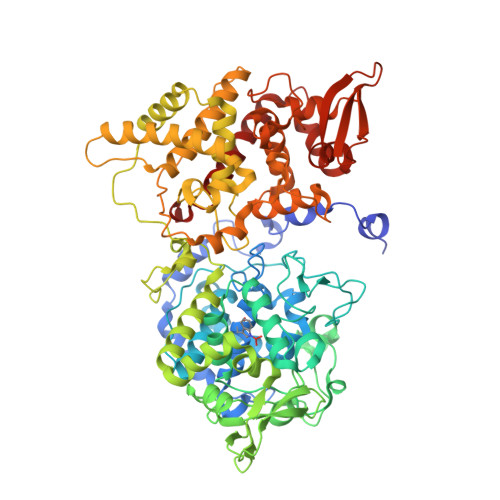An ionizable active-site tryptophan imparts catalase activity to a peroxidase core.
Loewen, P.C., Carpena, X., Vidossich, P., Fita, I., Rovira, C.(2014) J Am Chem Soc 136: 7249-7252
- PubMed: 24785434
- DOI: https://doi.org/10.1021/ja502794e
- Primary Citation of Related Structures:
5SYH, 5SYK - PubMed Abstract:
Catalase peroxidases (KatG's) are bifunctional heme proteins that can disproportionate hydrogen peroxide (catalatic reaction) despite their structural dissimilarity with monofunctional catalases. Using X-ray crystallography and QM/MM calculations, we demonstrate that the catalatic reaction of KatG's involves deprotonation of the active-site Trp, which plays a role similar to that of the distal His in monofunctional catalases. The interaction of a nearby mobile arginine with the distal Met-Tyr-Trp essential adduct (in/out) acts as an electronic switch, triggering deprotonation of the adduct Trp.
Organizational Affiliation:
Department of Microbiology, University of Manitoba , Winnipeg MB R3T 2N2, Canada.





















